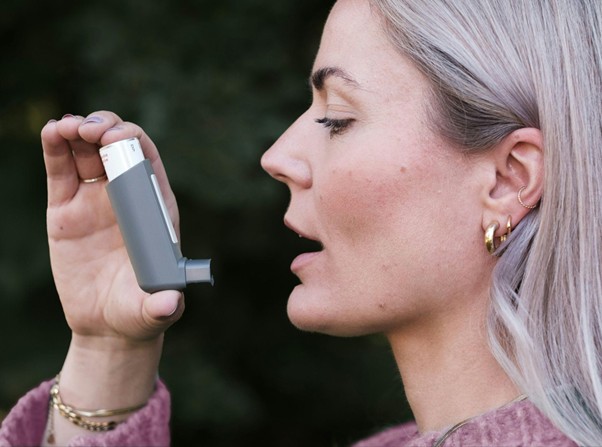Rare Diseases List: The Top 10 You Should Know
This rare diseases list highlights just how often serious conditions go undiagnosed for years. People with rare diseases often live in uncertainty. They visit multiple doctors, receive vague explanations, and manage symptoms no one can explain. Many are told their complaints are due to stress or anxiety.
At Saventic Care, we regularly meet people who have gone through this. For them, receiving a diagnosis means more than getting treatment, but it can bring clarity, recognition, and direction as well.
In the European Union, a disease is classified as rare if it affects fewer than one in 2,000 people. In the United States, the definition includes conditions affecting fewer than 200,000 individuals. In Brazil, a disease is considered rare if it affects fewer than 65 in 100,000 people—roughly equivalent to one in 1,538. While each condition is uncommon on its own, rare diseases affect over 300 million people worldwide.
Most remain undiagnosed or are discovered too late, which is why this article highlights ten rare diseases that are frequently missed in everyday care. While not all of them are among the most rare conditions, many are severely underrecognized and often misdiagnosed for years. This rare diseases list is designed to help patients and clinicians spot warning signs earlier.

How we chose this rare diseases list
There are thousands of known rare diseases. For this article, we didn’t focus on the most rare conditions but on those that:
- are often diagnosed late or incorrectly
- show symptoms that are clear to patients but unclear to systems
- can be treated or managed when identified early
- represent different age groups and organ systems
This does not aim to be a complete overview. Of course, it doesn’t cover every relevant condition, but it reflects where increased awareness can improve diagnostic outcomes. This rare diseases list includes examples of conditions where increased awareness could help shorten the path to diagnosis drastically.
Top 10 Rare Diseases Often Overlooked in Diagnosis
1. Ehlers-Danlos Syndrome (EDS)
Frequency: 1 Person in 5 000-1 0000
A group of connective tissue disorders. Leads to joint instability, pain, fatigue, and frequent injuries. Often dismissed as normal flexibility or labeled psychological.
2. Fabry Disease
Frequency: 1 Person in 40 000-117 000, high number of unreported cases expected
A metabolic disorder that causes nerve pain, gastrointestinal issues, and long-term organ damage. Often mistaken for stress-related conditions or IBS. Enzyme therapy is available.
3. Wilson’s Disease
Frequency: 1 Person in 30 000
A genetic condition that causes copper to build up in the body, affecting the liver and brain. Symptoms range from mood changes to motor dysfunction and can be identified through lab testing.
4. Stiff Person Syndrome (SPS)
Frequency: 1 Person in 1 000 000, High number of unreported cases expected
A neurological condition with progressive stiffness and muscle spasms. Frequently misdiagnosed as anxiety, multiple sclerosis, or Parkinson’s disease.
5. Mitochondrial Myopathy
Frequency: Unknown but expected to be less than 1 Person 1 000 000
Mitochondrial myopathy refers to a group of rare neuromuscular disorders caused by mitochondrial dysfunction. It can lead to fatigue, muscle weakness, seizures, or heart complications. Because of its highly variable symptoms and diagnostic challenges, it is considered one of the most overlooked entries among rare conditions.
6. Hereditary Angioedema (HAE)
Frequency: 1-9 People in 100 000
Episodes of swelling, often affecting the face, abdomen, or throat. Not allergy-related but sometimes confused with it. Can be life-threatening without proper treatment.
7. Eosinophilic Granulomatosis with Polyangiitis (EGPA)
Frequency: Estimated fewer than 1 in 200,000
EGPA is a rare autoimmune vasculitis that causes inflammation in blood vessels and is often associated with asthma, sinus problems, and elevated eosinophil levels. Symptoms can vary widely and may include nerve pain, skin rashes, or breathing difficulties. Because its signs overlap with more common conditions, EGPA is frequently misdiagnosed or recognized late.
8. Pompe Disease
Frequency: Unknown
A genetic disease that damages muscles and may affect the heart. In adults, it is often misdiagnosed as chronic fatigue or muscular dystrophy.
9. Idiopathic Pulmonary Fibrosis (IPF)
Frequency: 1-5 people in 10 000
Lung tissue becomes scarred, causing progressive shortness of breath. Commonly mistaken for asthma or aging, so early detection is critical.
10. Acute Intermittent Porphyria (AIP)
Frequency: 1-9 People in 1 000 000
A metabolic disorder with recurring abdominal pain, nausea, and neurological symptoms. These unpredictable episodes are often misread as psychological, delaying proper diagnosis.
Why These Conditions Are Commonly Overlooked
Many rare diseases start with symptoms that seem ordinary. Fatigue, digestive discomfort, or mood changes are often explained by common conditions. In many clinical settings, rare possibilities are not considered first.
Therefore most people with a rare condition wait several years for a correct diagnosis, during which symptoms often worsen and support remains out of reach. We hope this rare diseases list was useful for you to learn a little about these conditions!
How Rare Disease Diagnosis Is Changing
Digital tools, such as Saventic Care, are helping doctors and patients find connections that are hard to see in everyday care.We use AI-supported systems that analyze medical history, symptom patterns, and lab data. These tools help uncover possibilities that might otherwise be missed, but they are not a replacement for clinical experience. They support better and faster decision-making. Because rare diseases are part of routine medicine, even if each one is individually uncommon, failing to recognize them leads to delays, while early recognition leads to better care.
Thus, if you are experiencing unexplained symptoms and suspect a rare disease might be involved, you can use our free and secure Rare Disease Risk Check. Just fill out our Patient Form. We’ll take it from there and guide you through the next steps! Learn how Saventic Care works and please reach out to us if you need support during filling out the patient form or have any questions. We´d love to hear from you!



